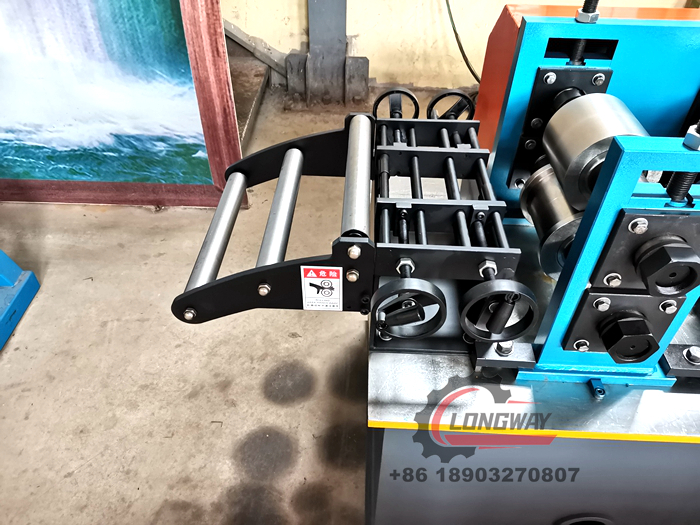standing seam machine for sale manufacturer
Understanding Standing Seam Machines for Sale A Manufacturer's Perspective
In the world of metal roofing and siding, standing seam technology has gained considerable traction due to its durability, energy efficiency, and aesthetic appeal. For manufacturers and contractors seeking to expand their offerings, investing in a standing seam machine can be a game-changer. This article will explore what standing seam machines are, their benefits, and key considerations for those in the market for such machinery.
What is a Standing Seam Machine?
A standing seam machine is a specialized piece of equipment designed to produce standing seam panels. These panels are characterized by their vertical seams that stand above the level of the roof or wall surface. Unlike traditional roofing panels, which often involve overlapping edges, standing seam systems provide a sleek appearance and enhanced weather resistance.
These machines can be classified into different types depending on the specific functions they perform. Some machines are designed for straight panel production, while others are equipped to handle curved or custom shapes. Advanced standing seam machines may also incorporate features like roll-forming capabilities, allowing for quick and efficient production.
Benefits of Standing Seam Machines
1. Durability and Longevity Standing seam roofs are renowned for their durability. The interlocking design minimizes water infiltration, reducing the risk of leaks over time. Manufacturers can assure their customers that standing seam systems, once installed, can last for decades, providing an appealing selling point.
2. Aesthetic Versatility With the ability to produce different profiles and colors, standing seam machines allow manufacturers to cater to a diverse range of architectural styles. This versatility enhances marketability and gives customers the freedom to choose designs that best suit their projects.
3. Energy Efficiency Standing seam roofs can significantly contribute to energy savings. Their reflective surfaces can help reduce heat absorption, thereby lowering air conditioning costs. Manufacturers can market their standing seam products as energy-efficient solutions, aligning with increasing consumer awareness about sustainability.
4. Speed of Production Modern standing seam machines are designed for efficiency, enabling manufacturers to produce panels quickly. This rapid production capacity can lead to shorter lead times, giving manufacturers a competitive edge in the market.
standing seam machine for sale manufacturer

5. Customization Many machines allow for customization in panel size, thickness, and profile, enabling manufacturers to meet unique client specifications. This adaptability can be pivotal in winning contracts for specialized projects.
Key Considerations When Purchasing a Standing Seam Machine
If you're considering purchasing a standing seam machine, several factors must be taken into account
1. Production Capacity Assess your current and future production needs. Choose a machine that can scale with your business or adapt to seasonal demands without compromising quality.
2. Technology and Features Invest in machines with the latest technology, such as automated controls, precision cutting, and user-friendly interfaces. Advanced features can enhance productivity and reduce the potential for errors.
3. Support and Service Opt for manufacturers that offer comprehensive warranties, as well as training and technical support. Reliable customer service can make a significant difference during the installation and operational phases.
4. Cost vs. Value While budget is always a consideration, it’s essential to weigh the cost of the machine against its long-term value. Cheaper machines may result in higher maintenance costs or lower quality outputs.
5. Market Demand Research the specific needs of your target market. Understanding what types of standing seam products are most sought after in your area can guide your choice of machine and production focus.
Conclusion
Investing in a standing seam machine presents a multitude of opportunities for manufacturers, from meeting growing market demands to enhancing product offerings. As the popularity of standing seam technology continues to rise, those equipped with the right machinery and knowledge will likely see substantial rewards in the competitive landscape of roofing and siding solutions. By carefully considering the benefits and the key purchase considerations outlined above, manufacturers can make informed decisions that contribute to their long-term success.
-
Roof Panel Machines: Buying Guide, Types, and PricingNewsJul.04, 2025
-
Purlin Machines: Types, Features, and Pricing GuideNewsJul.04, 2025
-
Metal Embossing Machines: Types, Applications, and Buying GuideNewsJul.04, 2025
-
Gutter Machines: Features, Types, and Cost BreakdownNewsJul.04, 2025
-
Cut to Length Line: Overview, Equipment, and Buying GuideNewsJul.04, 2025
-
Auto Stacker: Features, Applications, and Cost BreakdownNewsJul.04, 2025
-
Top Drywall Profile Machine Models for SaleNewsJun.05, 2025








